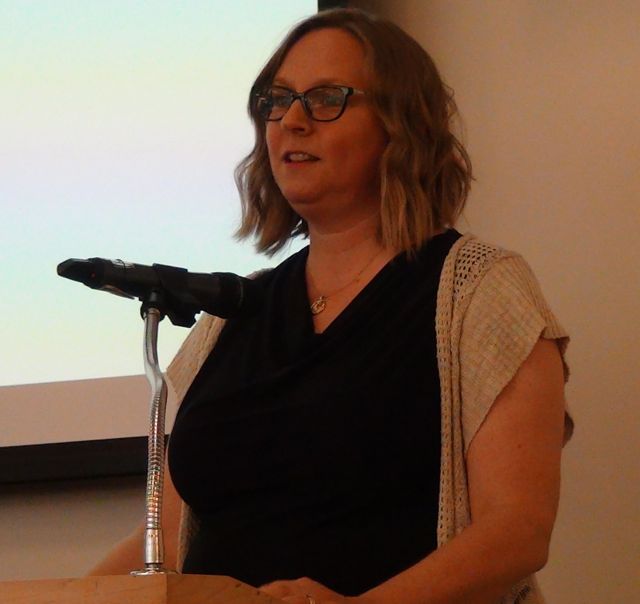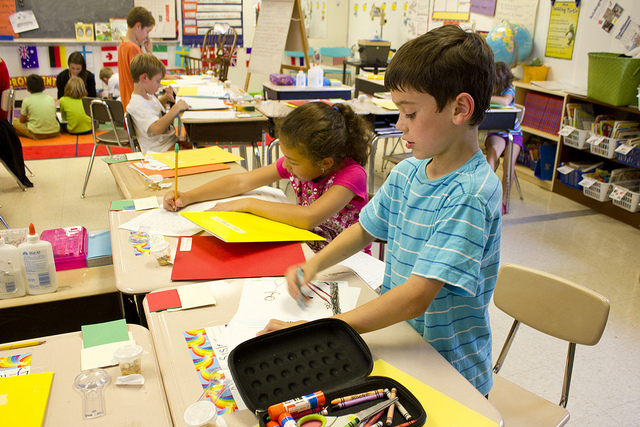In Praise of Mistakes - Uncovering the Creativity in Mathematics
Posted on June 2, 2016
0 comments 1707 ViewsBy Carol Dennis
When I think of doing math, I think of trying to remember what equation to use to get the circumference of a circle, or some memorized but long forgotten phrase to solve for the hypotenuse of a triangle, or even the more basic Times Table chants we used to repeat in school.

“Even among our greatest thinkers,” says Dr. Beaver, “the greatest achievements came when they realized why what they were doing was wrong. That’s where the learning takes place.”
My view of mathematics took a dramatic shift
During my conversation with Dr. Beaver, my view of mathematics took a dramatic shift. It was like putting on a new pair of glasses and suddenly realizing the blob of green in front of you is actually a lovely rhododendron. I left inspired - not just by what math could be, but by the vision of math teachers coming out of Dr. Beaver’s classes (and the entire WOU Mathematics Department) ready to pass this inspiration along to the students they will teach.
“We see math backwards,” Beaver explains. “We see the end product [that] somebody figured out. But the process that they went through to get to there, step by step, involved a lot of creativity.”
Math is the study of patterns."
Dr. Beaver says that math is the study of patterns. “The reason we have these shortcuts,” those equations, phrases, and chants, “is because someone has seen the pattern.”
As I listened to Dr. Beaver talk so passionately about math, I
learned that doing math is not only about getting the right answer, but about
the 100 wrong answers that came before. Understanding why the answer is right
or wrong allows students to use the same process to solve the next problem.
Taking her passion statewide
In 2013, Dr. Beaver was part of a statewide team that helped amend rules at the Oregon Teachers Standards and Practices Commission (TSPC), adding an Elementary Math Instructional Leader Specialization.
“Every state [in the US] has a Reading Specialization,” says
Dr. Beaver. “There’s been a push in the last 10 years for every state to have a
Math Specialization, to help students do math.” Dr. Beaver focused her passion to help make that happen in Oregon.
Once the new rules were enacted, Dr. Beaver, along with
colleagues Drs. Laurie Burton and Rachel Harrington, created a graduate
program, Elementary Mathematics Instructional Leaders (EMIL), that allows
Oregon elementary math teachers to get that credential.
Then, working with The Research Institute at WOU, the Willamette ESD, and the Oregon Coast STEM Hub, Dr. Beaver was able to secure a $1 million, three-year grant from the Oregon Department of Education that is providing financial and professional supports for up to 60 Oregon teachers to go through the program. The funded project was nicknamed DEMILO (Developing Elementary Mathematics Instructional Leaders in Oregon).
DEMILO coursework - Content Knowledge, Leadership, Pedagogy
The DEMILO coursework covers three general areas. Content knowledge is not new to these teachers, however the program helps align the content to the Common Core. The Leadership elements of the courses explore mentoring strategies and leadership skills that these teachers will employ back in their home districts. And finally, Pedagogy, through which the participants learn about best practices.
It is in the Pedagogy section that these teachers are trained in how to encourage and facilitate student discourse around math. This concept needed some explaining, since I still had not fully wrapped my head around this new way of thinking about the subject.
“You might think math is about the teacher up there lecturing,” said Dr. Beaver when she saw the confused look on my face. “What we’ve come to understand more is that, if we want it to be about student thinking and pattern recognition and creativity, then we need to get the students talking. We need to make their mistakes valuable.”
Making mistakes valuable - another concept that gave my head a bit of a spin.
“We talk about orchestrating a discussion so the math can be revealed by the students,” continues Dr. Beaver. “So it’s not just ‘come up to the front and show us the answer.’ The teacher can look around the room and say, ‘What you did was important because of this and I want the whole class to see that. You did it one way, and the next person did it a different way, but it’s connected to what you did.’ So it’s about a thoughtful and purposeful discussion, so the math can be revealed by the students.”
This purposeful discussion with elementary school students

Learning that to make a mistake is not about failure, but about
the process for finding success is a valuable life lesson for all of us. Finding this life lesson in a discussion about math was a complete, and eye opening, surprise.
Photo credit: Whiteboard equation, Scott Woods-Feh; “Second grade writing class” by Woodleywonderworks - Creative Commons
Recent Blog Posts
Project Spotlight: Creating Supports for Survivors of Gender-Based Violence Jun 6, 2018
Project Spotlight: Investigating Executive Function Concerns in Infants and Toddlers May 23, 2018
Project Spotlight: Reaching Out to an Underserved Population May 9, 2018
Project Spotlight: Fighting Against Gender-Based Violence Mar 14, 2018
Project Spotlight: Increasing Diversity in Early Childhood Educators Feb 7, 2018

